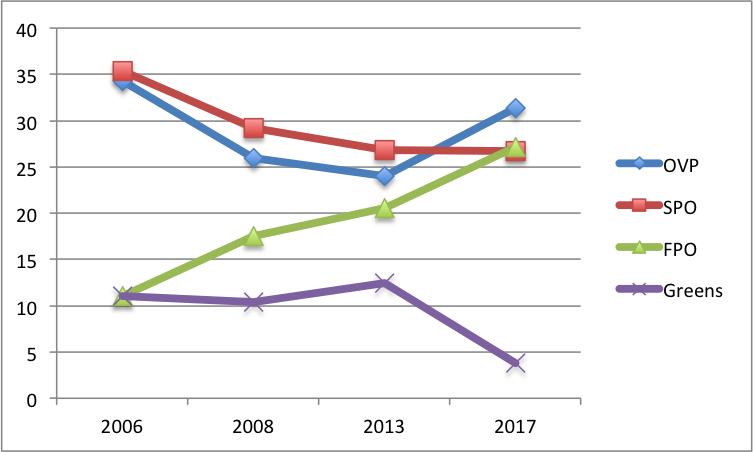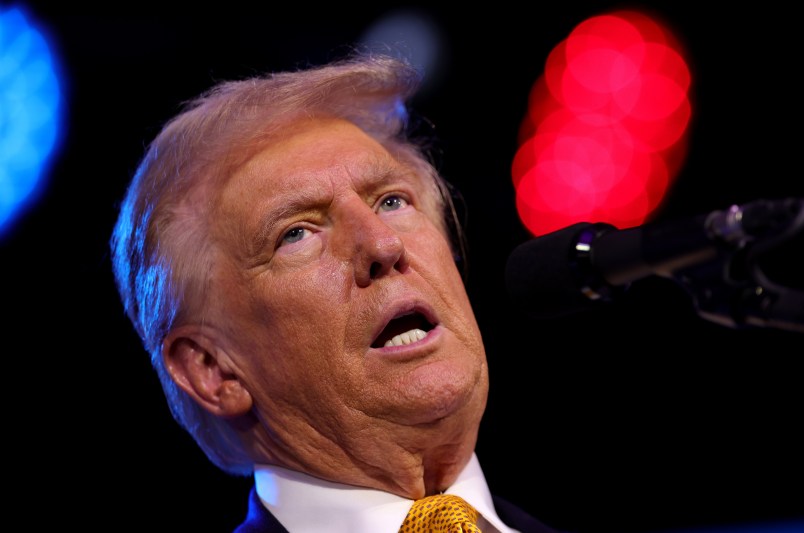In Austria’s legislative elections, from which a Chancellor will be chosen, the free market People’s Party (OVP), campaigning on a promise to reduce the number of refugees (primairly from the Middle East) and to limit benefits for immigrants, led the field with 31.6 percent. The Social Democrats (SPO) came in with 26.7 percent, which is a postwar low for a party that has been in power, or shared power, for most of the last 70 years. And the Greens, whose candidate had won the presidency last year, came in at 3.8 percent, less than enough to qualify for parliamentary representation.
But the winner was the rightwing populist Freedom Party (FPO), which campaigned against asylum-seekers and immigrants. It came in with 27.4 percent of the vote, making it Austria’s second largest party, and the likely coalition partner for the People’s Party in the government. If you look at the last four elections, what you see is a fairly steady decline for the left of center parties and the precipitous rise of the Freedom Party.
It doesn’t take a Ph.D. in political science to figure out why. The dividing line in Austrian politics has been the issue of refugees and immigrants, which was underlined by German Chancellor Angela Merkel’s decision in 2015 to welcome immigrants from Syria. When then current Chancellor, Social Democrat Werner Faymann, cheered Merkel’s decision, his fate and that of his party was sealed. Faymann tried to change course, but it was too late. The Greens have remained the most pro-immigrant of the Austrian parties.








